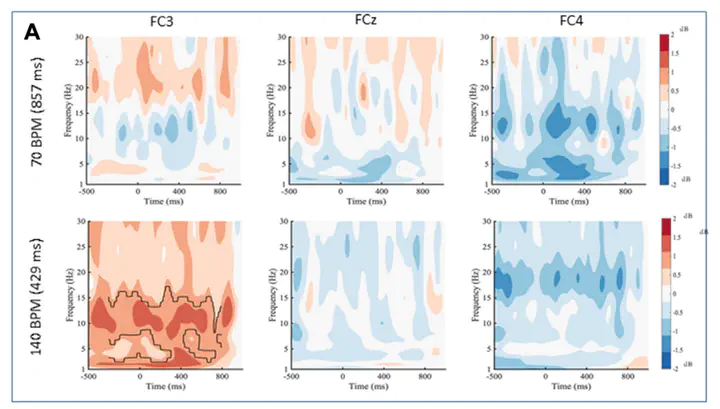
Abstract
Music has been a therapeutic strategy proposed to improve impaired movement performance, but there remains a lack of understanding of how music impacts motor cortical activity. Thus, the purpose of this study is to use a time–frequency analysis (i.e., wavelet) of electroencephalographic (EEG) data to determine differences in motor and auditory cortical activity when moving to music at two different rates. Twenty healthy young adults tapped their index finger while electroencephalography was collected. There were three conditions (tapping in time with a tone and with two contrasting music styles), and each condition was repeated at two different rates (70 and 140 beats per minute). A time–frequency Morlet wavelet analysis was completed for electrodes of interest over the sensorimotor areas (FC3, FC4, FCz, C3, C4, Cz) and the primary auditory areas (T7, T8). Cluster-based permutation testing was applied to the electrodes of interest for all conditions. Results showed few differences between cortical oscillations when moving to music versus a tone. However, the two music conditions elicited a variety of distinct responses, particularly at the slower movement rate. These results suggest that music style and movement rate should be considered when designing therapeutic applications that include music to target motor performance.